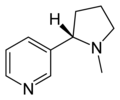Borate (boric acid) compounds for insect control
We frequently get questions about the various borate products on the market to control insects around the home. These products are used to control ants , cockroaches and structural pests like carpenter ants , powderpost beetles and dry-rot fungi . General characteristics Borates offer a low toxicity alternative to conventional insecticides, but are slow acting and may take several weeks to be completely effective. Borates are also generally long lasting , if kept dry. And, borates are generally not used outdoors because of they are soluble in water . Borate is primarily an insect stomach poison and fungicide. Stomach poisons must be eaten by the pest to be effective. Borate Products Timbor and Bora Care (and a few others) are products for structural pest control (termites, carpenter ants and wood-boring beetles). Timbor is a powder of 98% disodium octaborate tetrahydrate, a sodium salt of boric acid, and Bora Care is a 40% solution of the same compound plus ethylene glycol . ...
















